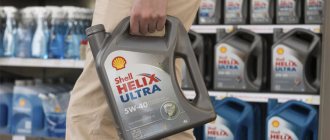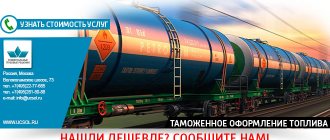Producing countries
The most popular countries exporting butter are:
- Finland;
- France;
- Estonia;
- Denmark;
- Lithuania.
ATTENTION!
We work only with legal entities. Russia cannot import products from these countries due to a food embargo that came into force in August 2015 and is still in effect today. It is prohibited to import milk and dairy products from the European Union, Ukraine, Australia, USA, Canada, Norway. However, imports of butter, after a decline in response to the embargo over the past two years, are growing, and quite significantly. Thus, in 2021 there was still a decline. But in 2021, imports of butter increased by about 40%.
Russia has reoriented purchases to suppliers from other countries. Thus, the main exporters of butter to the Russian market are:
- Belarus – 80.7%;
- Uruguay – 8.2%;
- New Zealand - 3.4%;
- Kazakhstan – 2.3%;
- Kyrgyzstan – 2.2%;
- Argentina – 2%.
In fairness, it must be said that unofficially it was Belarus that became a kind of transshipment point for European goods. And many experts agree that, one way or another, dairy products from the European Union end up in the Russian Federation. This is indirectly evidenced by the synchronized increase in purchases by Belarus of relevant products from EU countries. In the absence of growth in its own production, Belarus managed to significantly increase the volume of supplies to the Russian market.
As for vegetable oils, Russia exports mainly sunflower oil. Russian products are in demand in Turkey, Algeria, Uzbekistan, and Iran. Soybean oil is purchased from China and Algeria. Rapeseed oil is bought in Norway, the Netherlands and Lithuania.
Imports of vegetable oil amounted to about 1.5 million tons in 2021. At the same time, palm oil is mainly imported into the Russian Federation, which is purchased in Indonesia and Malaysia. This is where coconut oil comes from. The Russian Federation purchases olive oil from Spain and Italy, and soybean oil from Belarus. Indonesia, Belarus and Malaysia remain the largest suppliers of vegetable oil.
Customs clearance of oil
The customs clearance process for edible oil is subject to the general rules of customs clearance. At the same time, it should be borne in mind that butter is a product of animal origin, and therefore is a regulated product. At the same time, all types of vegetable oils are exempt from quarantine control, despite the fact that they are made from plants and, logically, should be subject to phytosanitary control.
Note! Customs clearance of oil from Belarus, Kazakhstan, Kyrgyzstan and other countries that are part of the Customs Union is not required. The territory of the participating countries of the Customs Union is a single customs territory.
The mandatory documentation package includes:
- foreign trade contract;
- invoice or invoice;
- veterinary certificate;
- waybill;
- packing list;
- certificate of origin;
- declaration of conformity;
- marking.
If the product contains GMOs, then a certificate of state registration is required. To obtain it, it is advisable to provide certificates for GMO components, issued in the country of production, and an expert opinion on the safety of the product. A customs declaration is registered along with the package of documents. We recommend submitting it to the EDC - it’s faster.
The information in the documents is pre-checked so that it does not become clear during the customs clearance process that the information does not match or that errors have been made. Customs has the right not to release imported cargo if not all documents are provided or if they contain false or incomplete information.
The declarant must determine the code according to the commodity nomenclature of foreign economic activity, which is required for the implementation of tariff and non-tariff regulation measures.
Butter is included in group 0405 “Butter and other fats and oils made from milk; milk pastes." The table below shows the HS codes and customs duty rates:
| HS Code | Item name | Import duty rate, % |
| 0405 10 110 0 | Natural butter with a fat content of no more than 85% in primary packaging with a net weight of no more than 1 kg | 15%, but not less than 0.22 euro/kg |
| 0405 10 190 0 | Natural butter with a fat content of no more than 85%, other | 15%, but not less than 0.22 euro/kg |
| 0405 10 300 0 | Recombined butter with a fat content of no more than 85% | 15%, but not less than 0.22 euro/kg |
| 0405 10 500 0 | Whey oil with a fat content of not more than 85% | 15%, but not less than 0.22 euro/kg |
| 0405 10 900 0 | Other butter | 15%, but not less than 0.16 euro/kg |
| 0405 20 100 0 | Dairy spreads with a fat content of 39% or more but less than 60% | 15%, but not less than 0.22 euro/kg |
| 0405 20 300 0 | Milk spreads with a fat content of 60% or more, but not more than 75% | 15%, but not less than 0.22 euro/kg |
| 0405 20 900 0 | Milk spreads with a fat content of more than 75% but less than 80% | 15%, but not less than 0.22 euro/kg |
| 0405 90 100 0 | Other milk fats with a fat content of more than 99.3% and a water content of not more than 0.5% | 15%, but not less than 0.22 euro/kg |
| 0405 90 900 0 | Other milk fats | 15%, but not less than 0.12 euro/kg |
The range of vegetable oils is more extensive and includes a branched structure, which includes subgroups from 1506 to 1518. Depending on the type of vegetable oil and the plant from which it is obtained, the rate varies from 0 to 15%. Product classification can be difficult for an inexperienced declarant, but you can always use the help of a customs broker. The customs representative classifies the goods quickly and correctly, so at customs it will be possible to avoid delays and adjustments to the amount of customs duties.
Important! The customs value, from which customs duty and VAT are calculated (from the amount of customs duty and customs value), should not be underestimated. If doubts arise about the correctness of the determination of the customs value, the customs services will require documentary confirmation of the calculations.
As mentioned above, butter requires a veterinary certificate. It is issued in the country of origin of the goods. Moreover, due to the fact that the cargo is regulated, it is checked jointly with a representative of Rosselkhoznadzor.
The certificate of origin confirms exactly where the product was manufactured and gives the right to duty-free import of goods. When importing goods from the CIS countries and Serbia, you can take advantage of preferences.
What does a store need to work with labeling?
Enhanced Qualified Electronic Signature
. It is needed to register in the “Chestny ZNAK” system and sign the UPD. You can get it at accredited centers.
Software for working with labeled goods.
A cash register program and an inventory system that can work with labeling. You may need to update your old software or buy new one. At ATOL, the disposal of labeled goods is supported by Frontol and Artix cash register software.
2D barcode scanner
. Needed to read marking codes during the sale of marked goods.
ATOL 2D scanners
Data collection terminal
. These are portable mini-computers with a 2D scanner that allow you to accept marked goods anywhere in the enterprise. The mobile terminal also speeds up the revaluation of goods, inventory, and accounting of alcoholic beverages according to the Unified State Automated Information System.
ATOL mobile terminals
Online cash register with support for the disposal of goods from circulation
. Not every cash register is capable of handling labeled goods. Check with your service company to see if the cash register model you have chosen supports labeling. If not, update the firmware or buy a new cash register.
It’s even better to choose a cash register that allows you to both record disposals and accept marked goods. This solution will allow you to save on a separate receiving workstation or protect trade in case the receiving workstation breaks down. This opportunity is provided by the ATOL SIGMA smart terminal if you connect the “Marking” module to it.
Smart terminals ATOL SIGMA
Appendix to the agreement with the OFD on the transfer of data to Chestny ZNAK
. If you already use an online cash register, then most likely you have an agreement with the OFD on the transfer of your fiscal data to the tax office. Now you need to conclude another agreement with the OFD or make an addition to the old one about providing you with the service of transferring marking codes to Chestny ZNAK.
Certification
Oil certification is carried out in the form of a declaration. The final document confirming compliance is the declaration. A separate technical regulation has been developed for dairy products, namely TR CU 033/2013 “On the safety of milk and dairy products.” Product labeling is checked according to TR CU 022/2011 “Food products regarding their labeling”. For vegetable oil, instead of TR CU 033/2013, TR CU 024/2011 “On the safety of fat and oil products” is used. Documents required for registration:
- application;
- product description;
- extract from the register;
- TU or GOST – copies;
- foreign trade agreement/invoice;
- previously issued certificates (if any);
- quality management system certificate (if any);
- laboratory test report.
The list must be clarified at the certification center. The declaration process involves analyzing products in laboratory conditions. As part of laboratory research, the chemical composition of the product, organoleptic properties, and appearance are examined. Samples are also examined separately for the presence of microorganisms, radiation, and toxic substances. After testing, the data is entered into a protocol, on the basis of which the applicant is issued a declaration of conformity. The declaration data is entered into the register.
Product labeling must contain the EAC mark, information about the manufacturer and importer, country of origin, production date, shelf life and conditions, nutritional and energy value.
Note! Vegetable oils often contain GMOs. For such products, in addition to the mandatory declaration of conformity, you need to issue a certificate of state registration (SGR). Only after registration of the SGR does voluntary certification of products become possible.
A voluntary quality certificate is issued at the request of the importer. It is not required for customs clearance, but is necessary to increase sales and expand markets. The quality certificate confirms compliance with the national standard - GOST. Butter is tested according to GOST 32261-2013 “Butter. Technical conditions". Sunflower oil - according to GOST 1129-2013 “Sunflower oil. Technical conditions". Olive and other oils according to GOST R21314-75.
Time frame for introducing oil labeling
The start of butter labeling in 2021 depends on its expiration date. If oil is stored for 40 days or more, then manufacturers and importers must label it from September 1, 2021. If the oil is stored for less than 40 days - from December 1, 2021.”
If the manufacturer and seller is a peasant farm, then labeling for it will begin only on December 1, 2022.
Deadlines for manufacturers
September 1, 2021
— all manufacturers and importers are required to label butter with a shelf life of 40 days or more.
December 1, 2021
— all manufacturers and importers are required to label butter with a shelf life of less than 40 days.
September 1, 2022
— it is necessary to maintain volumetric and varietal records. There is no need to transfer marking codes yet.
December 1, 2023
- It is necessary to maintain copy-by-instance records. This means that when transferring oil to a counterparty, information about each unit of goods, including the labeling code, must be indicated in the UPD.
Deadlines for sellers
March 31, 2022
— cashiers must record the disposal of goods with an expiration date
of less than 40 days
.
June 1, 2022
— cashiers must record the disposal of goods with an expiration date
of more than 40 days
.
September 1, 2022
— it is necessary to maintain volumetric and varietal records. There is no need to transfer marking codes at this stage.
September 1, 2022
— it is necessary to report to Chestny ZNAK information about any withdrawal of goods from circulation. Not only about disposal during sale, but also due to expiration, re-grading, theft, product recall.
December 1, 2023
- It is necessary to maintain copy-by-instance records. This means that when transferring oil to a counterparty, information about each unit of goods, including the labeling code, must be indicated in the UPD.
Deadlines for farmers
December 1, 2022
— the last to enter the labeling are peasant farms, which simultaneously produce and sell their products. For them, all marking processes come into force at the same time: marking and putting into circulation, recording withdrawal from circulation upon sale and for any other reasons.
How to sell labeled oil
Acceptance
. You accept goods from the supplier. Through electronic document management, you receive from him a universal transfer document (UDD) with labeling codes for each unit of incoming goods, or the volume and product code if the oil is perishable and is stored for less than 40 days.
UPD confirmation
. At the checkout or at a separate workstation equipped with a computer with EDI and a 2D scanner or TSD, you read the codes on the packages and compare them with the codes in the UPD. If there are no differences, confirm the UPD. The Chestny ZNAK system receives information about the transfer of ownership of the goods to you. From this moment on, the product can be safely sold, there will be no errors or discrepancies.
Sale
. At the checkout, use a 2D scanner to read the oil labeling code. When Chestny ZNAK receives information from the cash register about the sale of a product, its labeling code is removed from circulation. If you need to divide large factory packaging into parts for sale, then you do not scan anything at the checkout - in this case, you record the disposal manually through your personal account at Chestny ZNAK within 3 days from the first separation of the factory packaging.
Features of oil transportation
Butter is a perishable product, which also requires demanding storage conditions. It easily loses its shape and presentation, and quickly absorbs foreign odors. It can be transported by all modes of transport if proper transport conditions are met. The optimal temperature for transportation and storage is from -4°C to -6°C. Relative air humidity should be no more than 80%, otherwise there is a high risk of mold formation. At positive temperatures (from 0°C to +5°C), the shelf life of the oil, depending on the type, is 3–5 days.
Oil is transported in flatbed vehicles, refrigerated trucks, and refrigerated railway cars. The oil is placed in transport packaging - boxes that should protect the product from dust, heat, and contamination. Before transporting the oil, the car body, container, and wagon are washed, disinfected, and dried. Boxes of oil are placed on lattice panels, which ensures good ventilation.
Upon arrival at the customs post, the batch of butter is immediately unloaded and placed in a refrigerator, where it is stored until customs clearance is completed.
Vegetable oil can also be transported by all types of transport: rail, sea, road. But the transportation period should not exceed 1 month. It is delivered in bulk in flexitanks, in tanks, trucks (packed in cans, barrels, bottles, etc.), in the cargo compartments of tankers. If products are transported in bulk, then the container must be thoroughly cleaned of the remnants of liquids previously transported in it by steaming, washing and drying. During transportation and storage, prolonged exposure to low temperatures is unacceptable - this leads to sedimentation, and sunlight - the oil oxidizes. When transporting and storing vegetable oil, it is necessary to observe the temperature regime - from +10°C to +12°C.
SB Cargo services
Our company deals with customs clearance of various products under all customs regimes. Regarding customs clearance of dairy products, and in particular butter, we have accumulated sufficient experience. We know not only the legal subtleties, but also how to properly deliver butter so that it does not spoil or lose its presentation. Customs clearance with SB Cargo is convenient and fast. Thanks to direct cooperation with customs, we are able to reduce the customs clearance time to a minimum. We will calculate the customs duty, select the HS code, check the available documents and help you prepare the missing ones, and provide legal advice. Among other things, SB Cargo knows how to organize the transportation of a consignment of goods from a manufacturer in another country crossing the customs border. We are ready to take on all this by agreeing on the conditions and drawing up a contract. Call us by phone or write by email. If you are interested in the turnkey customs clearance and transportation service or individual operations, we will be happy to answer your questions.
Why butter labeling is being introduced in 2021
44% of butter in Russia does not contain what is stated on the packaging. Researchers from the Financial Research Institute of the Ministry of Finance came to these conclusions. To combat this, labeling is being introduced.
An article with research results on the Izvestia website
Labeling purposes
Reduce the percentage of counterfeit and counterfeit goods
. Using a labeling system, you can trace the entire path of a product: from the production line to the buyer. If labeling participants try to bypass the system, inspection authorities will notice a violation of the law, and buyers will notice that they are being sold a low-quality product. Therefore, working with counterfeit and counterfeit products will become unprofitable.
For example:
- If a store sells oil without a labeling code, the cash register will not generate all the necessary documents and the receipt will not contain the necessary details. The tax office will notice that the goods that should be marked were sold without transmitting the code to Chestny ZNAK.
- If a seller tries to sell oil with a fake labeling code, then such a code will not pass verification in the Honest ZNAK system.
- And if the brand name, packaging or fat content of the oil does not match the characteristics of the product for which Chestny ZNAK issued a labeling code, the forgery can be detected by contractors, inspection authorities during a test purchase, or by the buyer himself when he scans the code through the Honest ZNAK application.
Give the consumer more information about the product
. The labeling code contains all the basic information about the product: what kind of product it is, by whom and when it was produced, what its expiration date is, what its characteristics are. The buyer can download the “Honest SIGN” application to their phone and use it to find out what is encrypted in the code. If there are discrepancies with what is indicated on the packaging, the buyer has a reason not to trust the manufacturer or seller and not buy the product.
Create healthy competition
. Manufacturers and sellers of counterfeit products lower prices because they use low-quality, cheap raw materials. With the introduction of labeling, it will be more difficult to pass off unnatural oil as natural, the market share of unscrupulous entrepreneurs will decrease and they will not interfere with honest entrepreneurs.






